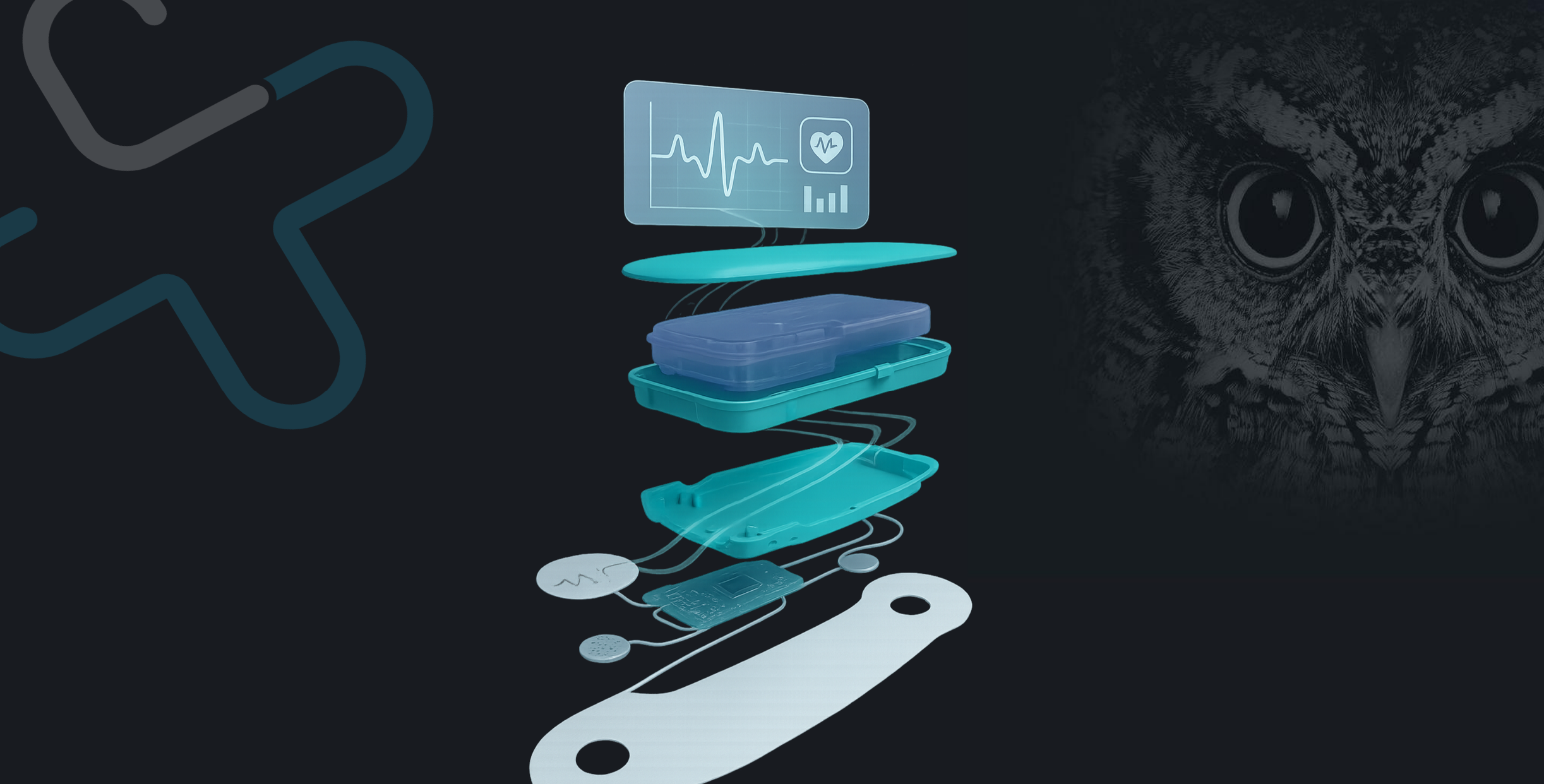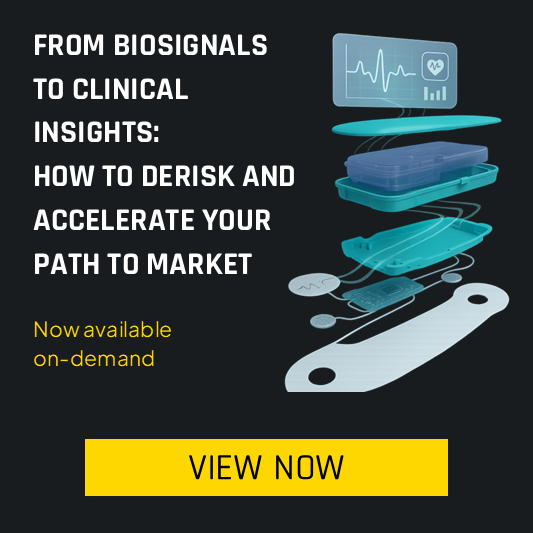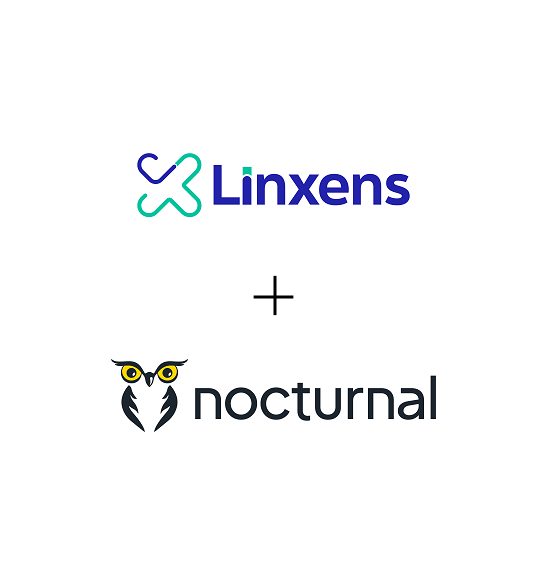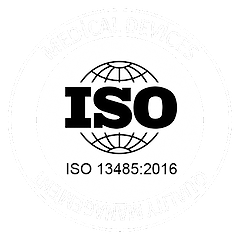
If you're building a medical device that relies on biosignals, the hardest part may be collecting the right data to prove it works, and doing so quickly enough to meet milestones and keep funding flowing.
In our recent webinar, “Derisk Device Development—From Biosignals to Clinical Insights,” we were joined by our partner Linxens Healthcare to offer some proven strategies for accelerating time to data—without compromising quality.
Here are the key takeaways from the conversation between Alix Joseph, Healthcare Marketing Director at Linxens, and KC Armstrong, Nocturnal’s Founder and President.
Data is your product—and your bottleneck
The value of most biosensor-enabled devices lies in the data they generate.
Whether wearable or implanted, these devices are essentially conduits for collecting, transmitting, and analyzing physiological signals.
The challenge?
You often need large amounts of high-quality, clinically relevant data to validate your solution, but you can't collect that data until the device is built.
That’s where modular, scalable platforms become game-changing. They allow early-stage teams to start capturing data in a clinically relevant form—sometimes before a full product even exists—helping prove value, attract funding, and build regulatory confidence.
Case in point: Accelerating data collection for Future Cardia
Device startup Future Cardia needed to collect a large amount of cardiac data for FDA submission, but doing it with their implantable device would have required an infeasibly large and expensive study, possibly delaying their time-to-market by years.
Instead, Linxens and Nocturnal helped Future Cardia transform the core device technology into a wearable patch that could collect comparable data for FDA approval. With Linxens’ pre-approved patch and Nocturnal’s data processing design, what would have been a year-long costly development project was successfully accomplished in record time and at substantially reduced cost.
In just a few months, Future Cardia started collecting high-quality data that met FDA standards—saving the company substantial amounts of time and money.
Biosensor and clinical data explosion: Demand-driven, technology-enabled
The rise of remote diagnostics and monitoring isn’t just about convenience—it’s a structural shift driven by aging populations, increased awareness of chronic and infectious diseases, and persistent shortage in healthcare workers.
At the same time, the maturing of technologies like AI, connectivity, miniaturization, and low-power design enables accurate and continuous biosignal monitoring. The post-COVID acceleration of at-home care has only strengthened this trend, creating the perfect moment for biosensor-based innovation.
Examples of such innovations can be found across a variety of use cases. Here are just a few examples:
- Cardiac monitoring is a mature application with well-established demand, reimbursement pathways, and clinical expectations. Long-wear ECG patches can capture high-fidelity signals for up to 14 days, enabling detection of intermittent arrhythmias that traditional monitors may miss.
- Sweat analysis is another emerging application, with growing interest in non-invasive detection of biomarkers like sodium, lactate, and even inflammation indicators such as CRP. While technically more complex, the ability to combine clinically-proven biosensors with flexible patches makes it possible to explore this frontier without starting from scratch.
- Temperature sensing, often overlooked, has high-impact applications in pediatrics, fertility, and infection monitoring. Success hinges on careful material selection, patch design, and accurate thermal contact—all of which must be tailored to body location, wear duration, and user profile.
The partnership advantage: Lower risk, faster path to approval
For early-stage medical device companies, it's a constant race to meet critical product and regulatory milestones before funds run out. Speed and predictability aren’t just helpful—they’re critical. That’s where the partnership between Linxens and Nocturnal offers a strategic edge.
On the biosensor side, there are decades of experience in medical-grade patch manufacturing and sensor integration that Linxens brings. With over 100 million clinical-grade sensors delivered, their platforms use materials and processes that are already validated for human use.
This gives startups a powerful advantage when preparing for regulatory submissions—offering clear precedent, built-in documentation, and less friction with FDA or CE reviewers.
Nocturnal adds specialized capabilities in ultra-low-power electronics and embedded software, developed specifically for wearable and implantable devices.
But it’s not just the technology that matters to startups. Nocturnal’s fixed-cost, milestone-driven model is designed for startups navigating tight timelines and investor-backed funding.
By working with predictable timelines and known components, teams can reduce technical unknowns, control costs, and avoid delays that often derail early-stage companies.
Together, Linxens and Nocturnal offer medical device startups a faster, safer, and more regulator-friendly path to collecting clinical data. Instead of spending valuable time designing a new patch or vetting components for biocompatibility, startups can tap into a proven ecosystem—with the confidence that every element has been purposely built, thoroughly tested, and audited for medical use.
This isn’t just about moving fast. It’s about moving forward with less risk, less rework, and a clearer path to regulatory approval.
Final thoughts: Time-to-data is your risk reduction strategy
Startups don’t usually fail because their technology doesn't work. They fail because they run out of money or time before they can prove that it works in a commercializable format. If you can shorten the time it takes to validate your idea, you reduce your risk.
That’s why smart founders take advantage of what’s already been solved, and double down on the differentiators that will set them apart in the market—their algorithm, their novel data correlation, their predictive model.
Biosensor-enabled solutions from Nocturnal and Linxens are designed to give innovators a faster, safer, and more cost-effective path to the data they need. That’s what the Linxens and Nocturnal partnership is all about.
Additional resources
- Webinar recording: From biosignals to clinical insights – how to derisk and accelerate your path to market
- Mastering the MedTech Data Explosion: Your guide to product design best practices for the age of mega data – from biosensors to data platforms and everything in between
- Linxens Healthcare website
MOST READ POSTS
Insights from a decade of milestone-based projects
Transforming biosignals into clinical insights
Why investors say No to medical device startups





